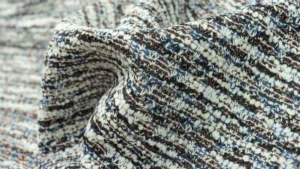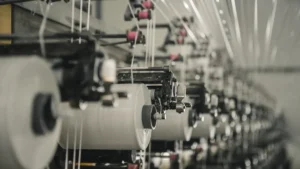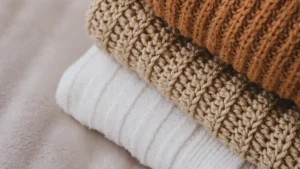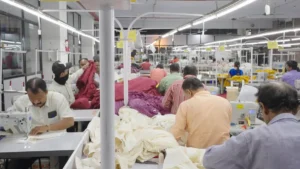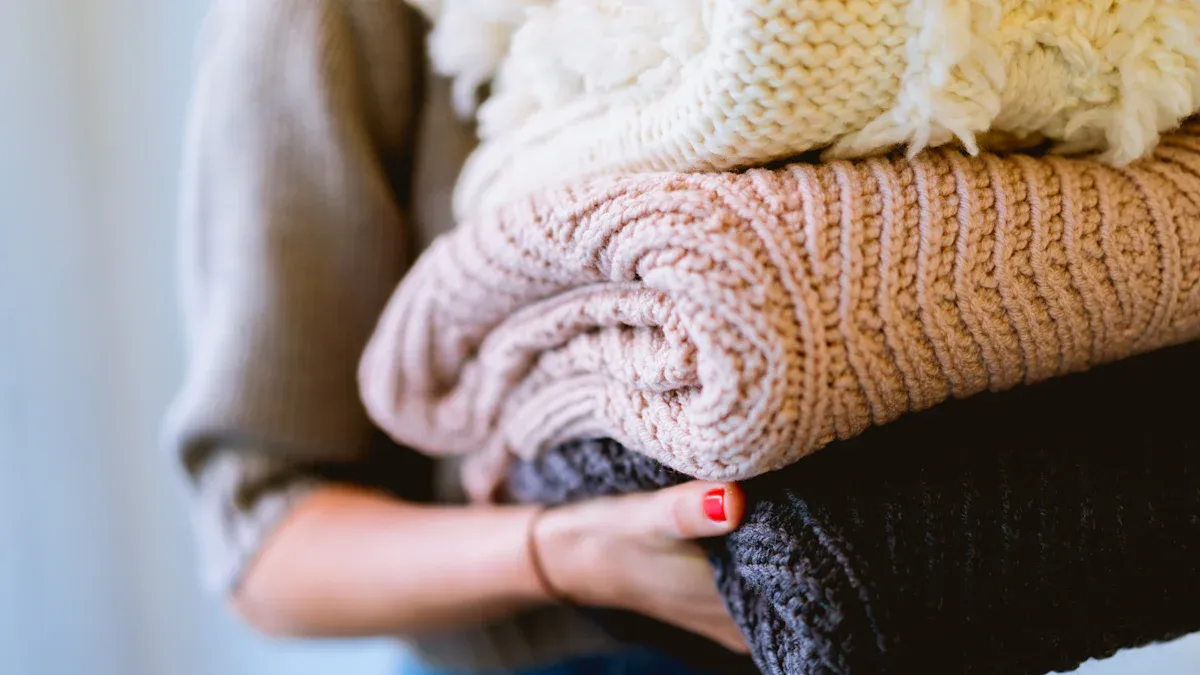
Fashion buyers and private labels face unique challenges when sourcing Shetland wool sweaters. Authentic Shetland wool is essential because it offers exceptional warmth and durability. Reliable suppliers play a crucial role in maintaining the high quality of these sweaters and safeguarding the brand’s reputation. Buyers who understand the importance of sourcing Shetland wool sweaters tend to outperform others in the market. There are great opportunities for those who value traditional craftsmanship and quality work.
Key Takeaways
Shetland wool sweaters are warm and strong. They are made from special wool from Shetland sheep. This wool gives the sweaters a unique feel and makes them last longer.
Buyers should work with trusted suppliers. These suppliers should show proof that the wool is real Shetland wool. They should also give samples to check if the wool is real and good quality.
Heritage brands make sweaters in the old, traditional way. Their sweaters are high quality and have a long history. OEM factories let you change designs and order fewer sweaters. But the wool they use may come from different places.
Popular styles are classic crewnecks and Fair Isle patterns. Some sweaters have brushed or shaggy finishes. These finishes make the sweaters softer and look more modern.
Good branding and clear labels help fashion brands stand out. Quality checks make sure the sweaters last a long time. This helps brands build trust and keeps customers coming back.
Shetland Sweater Qualities
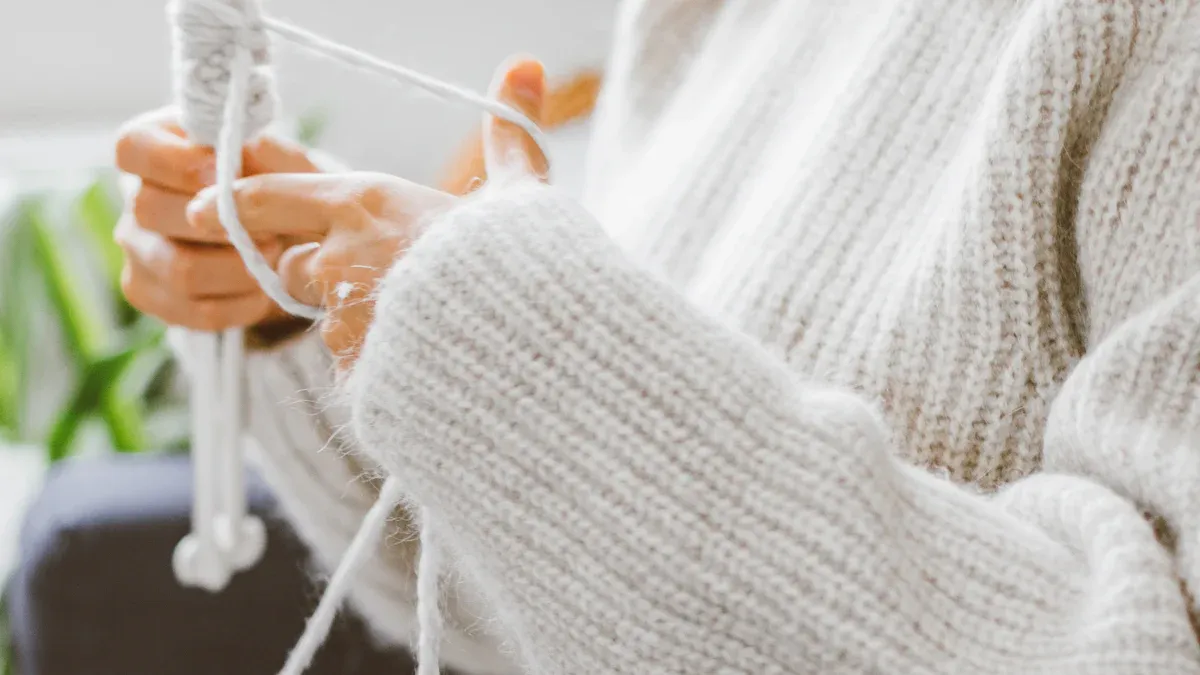
Wool Origins
Shetland wool comes from Shetland sheep. These sheep live on the Shetland Islands in Scotland. The weather there is cold and rough. This makes the sheep’s wool strong and warm. Local mills and families have made Shetland wool clothes for hundreds of years. This long history makes Shetland sweaters special and valuable in fashion.
Shetland wool making is important in Scottish culture. Stories about Fair Isle knitting and handcrafting made these sweaters famous. Wool Week and other events help people learn about these traditions. These events help the local economy and teach more people about real Shetland knitwear.
Aspect | Explanation |
|---|---|
Historical roots | |
Unique fiber qualities | Special fibers, many color and pattern names in local words |
Broad reference of ‘Shetland’ | Means the islands, sheep, fiber, yarn, and finished sweaters |
Lack of trademark protection | No legal trademark, not like Harris tweed, so there are business problems |
Cultural narratives | Fair Isle stories and ads help make Shetland sweaters known worldwide |
Museum collections | Old pieces and hand knitting show the culture and skill |
Key Features
Shetland sweaters are known for being tough, warm, and textured. The wool fibers are about 23 microns thick. They are thicker and rougher than Merino or lambswool. This makes Shetland sweaters bulky and crimped. The texture helps keep heat in and gives great insulation.
Shetland wool is light, fluffy, and warm for winter.
The bulky wool keeps you warm but can pill more.
Lambswool is softer and smoother but not as tough.
Merino wool is finer and softer, comfy but not as strong.
Wool Type | Average Fiber Diameter (microns) | Texture Characteristics | Durability | Warmth |
|---|---|---|---|---|
Shetland | ~23 | Very tough, hardy | Very warm | |
Merino | ≤24 (fine Merino <19.5) | Finer, softer, bendy | Not as tough | Good warmth, lets air flow |
Lambswool | Fine, soft (first shearing) | Smooth, strong, good for allergies | Tough, strong | Good warmth, keeps temp even |
Shetland sweaters use seamless knitting and ribbed edges. These ways of making sweaters stop weak spots and help them fit better. Finishing steps like scouring, brushing, and milling make the fabric softer and last longer. Fashion buyers like Shetland sweaters for their history, strong build, and special look. These things make them different from other wool clothes.
Sourcing Shetland Wool Sweaters
Supplier Types
Fashion buyers and private labels can pick from different suppliers. Some top choices are heritage brands, family mills, and OEM factories. Heritage brands like Jamieson’s or Harley of Scotland have been around a long time. They use old ways and get wool from Shetland sheep. Family mills are smaller and can make custom orders. OEM factories make lots of sweaters and offer private label services. Buyers need to check where the wool and sweaters come from.
Buyers should look at the supplier’s reputation and honesty. They should ask for proof about the wool. Some suppliers use only real Shetland wool. Others use blends or wool from other places. Vintage sweaters are another choice, but they are hard to find. There are not many, and many people want them.
Authenticity Checks
Checking if Shetland Wool Sweaters are real is very important. This keeps the quality high and builds trust. Some sweaters say “Shetland wool” but do not use wool from Shetland sheep. Buyers must find proof that the wool is from the right sheep and place. Shetland wool does not have a trademark like Harris Tweed. This makes checking harder.
Key things to check for real Shetland wool:
The wool must be from Shetland sheep and feel soft and special.
Some brands, like Jamieson & Smith, use marks like the Three Rams to show where the wool comes from.
Buyers should check that the labels and papers match what the seller says.
Many sweaters use wool from other countries or are made outside Scotland, even if the label says Shetland.
Good suppliers will share details about where the wool and sweaters are made.
Tip: Always ask for samples and papers before buying a lot. This helps stop mistakes and makes sure the sweaters are good.
The price of Shetland Wool Sweaters changes if they are real or not. Real 100% Shetland wool sweaters cost more than blends or fake ones. The table below shows the usual wholesale prices:
Sweater Type | Price Range (Wholesale, USD) | Minimum Order Quantity |
|---|---|---|
Authentic 100% Shetland Wool | 50 – 500 pieces | |
Blended/Non-authentic Wool Sweaters | $8.90 – $19.27 | 50 pieces |
Wool Blend (e.g., Alpaca blend) | $9.12 – $14.44 | 50 pieces |
Buyers who buy from trusted suppliers pay more for real sweaters. But they get better products that are special in the market. Finding real or vintage sweaters is hard and costs more. It also takes more time. But this helps the brand and makes customers happy.
Style Options

Men’s Styles
Men’s Shetland sweaters mix old and new styles. Buyers like crewneck and stripe crewneck sweaters. These styles are classic and easy to wear with many clothes. In the last five years, brands like Goodthreads, Duluth Trading Company, Shetland Woollen Company, Pendleton, O’Connell’s, and Harley of Scotland have been popular. These brands give both old-fashioned quality and good prices.
Popular Men’s Styles:
Crewneck sweaters
Stripe crewneck designs
V-neck pullovers
Cardigans
Turtlenecks
Zip-neck styles
Fashion buyers see more sweaters at lower prices now. Brands like Goodthreads help more people buy 100% wool sweaters. People now wear Shetland sweaters with military jackets. They use color blocking and mix casual with smart-casual looks. This change lets Shetland sweaters fit many styles, from old to new.
Women’s Styles
Women’s Shetland sweaters show both old and new fashion. Fair Isle sweaters are special for their colorful patterns and round necks. These sweaters use real Shetland wool and mix old skills with new looks. Some new styles are cropped, turtlenecks, and easy to layer.
The most liked colors come from Shetland’s land. These are browns, greens, blues, and grays. Some new designs use bright colors but still keep natural shades. McGeorge of Scotland has argyle patterns and lighter turtlenecks. This shows there are more choices for women’s Shetland sweaters.
Fair Isle sweaters are always in style. People wear them with jeans, skirts, or over dresses for a warm, stylish look. Their history and designer support keep them popular every year.
Brushed & Shaggy Finishes
Brushed and shaggy finishes are key in Shetland sweaters. These textures make the sweaters soft and less itchy. The brushed finish, made famous by Drake’s, gives a modern fit. It also makes sweaters good for layering all year.
Shaggy finishes, like the “Shaggy Dog” sweater, have a bold, soft look. This style started in the mid-1900s and is still popular. Buyers like these finishes for warmth, comfort, and a new, relaxed style instead of regular sweaters or sport coats.
Brushed and shaggy Shetland sweaters stay popular. This shows that texture, comfort, and tradition matter in knitwear today.
Supplier Selection
Heritage Brands
Scottish heritage brands like Jamieson’s, Harley of Scotland, and Shetland Woollen Co. are known for real Shetland knitwear. Jamieson’s makes its own yarn and knits sweaters with classic Fair Isle patterns and saddle shoulder crew necks. Harley of Scotland uses a special way to knit sweaters in one piece. This makes their sweaters fit smoothly and look neat. They get their yarn from top Scottish suppliers like JC Rennie and Todd & Duncan. Harley also has a yarn called Voe True. It is made from undyed wool from original Shetland sheep. These brands care about skill, history, and checking quality. Their sweaters use old ways and real Shetland wool. This makes them a great pick for buyers who want real products.
Note: Heritage brands sometimes add special touches. These can be brushed finishes or fancy blends. These extras make their sweaters different from ones made in big factories.
OEM Factories
OEM factories make sweaters for other brands and can make a lot at once. They let buyers put their own labels on the sweaters. But they do not always use old ways to make them or care where the yarn comes from. OEM factories might mix different wools or get wool from outside Scotland. They let buyers order many or just a few sweaters and change the design. But their sweaters may not have the same history or quality as Scottish brands. Buyers who want lower prices or fast orders often pick OEM factories. But they should check where the wool comes from and how the sweaters are made.
Supplier Type | MOQ (pieces) | Lead Time (days) | Customization Options |
|---|---|---|---|
Heritage Brand | 30 – 100 | 30 – 60 | Limited, focus on tradition |
OEM Factory | 30 – 40+ | Embroidery, labels, OEM |
Key Questions
Fashion buyers need to ask clear questions before ordering Shetland sweaters:
What is the smallest order I can make?
Where do you get your yarn, and is it all Shetland wool?
How long does it take to make and send samples?
Can you show proof about the yarn or fiber?
What changes can I make, like adding embroidery or my label?
How do you check the quality while making sweaters?
Can you make digital samples or send samples fast?
Tip: Always ask for papers and samples to check if the sweaters are real and good before buying a lot.
Picking the right supplier for Shetland Wool Sweaters keeps the sweaters good and helps the brand. Choosing carefully helps buyers make customers happy and do well in the market.
Bulk Order Checklist
Yarn Types
Buyers need to pick between 100% Shetland wool or blends. Pure Shetland wool makes sweaters warm, strong, and special. Blends can cost less and feel softer. But blends might not be as tough or classic. Most heritage brands say to use two-ply Shetland yarn for big orders. This yarn makes sweaters thicker and warmer. It also helps sweaters keep their shape. When Sourcing Shetland Wool Sweaters, always ask about the yarn. You should get samples to feel and compare the yarn.
Fit & Specs
Fit and how sweaters are made change the final look. Buyers can pick different sleeve types:
Raglan sleeves bend easily and look relaxed.
Set-in sleeves look neat and more formal.
Saddle shoulders have seams on the shoulder for a classic style.
Necklines can be classic crew necks with ribbing about 2.25cm or thicker ribbing at 3cm. Lower necklines are good with shirts and ties. Higher necklines are better for casual outfits. Most Shetland sweaters use seamless knitting. This gives a boxy shape and makes them last longer. Brushing is an important finish. It uses teasels and changes the sweater’s feel for good. There are shaggy, triple brushed, and quad shaggy levels. Each level makes the sweater fuzzier and warmer. Brushed sweaters cannot be returned, so buyers must be sure before ordering.
Sampling & Labels
Sampling lets buyers check the fit and quality first. Good suppliers give sample sweaters and yarn pieces. It takes about two to four weeks to get samples. Private label lets brands add their own tags, embroidery, or packaging. Buyers should talk about branding early to stop delays. Clear talks with suppliers help make sure the sweaters look right and make customers happy.
Common Mistakes
Yarn Verification
Many buyers forget to check where the wool comes from. Some suppliers say their sweaters use Shetland wool, but the yarn might be from somewhere else. This can make the sweaters lower quality and hurt the brand’s name. Buyers should always ask for proof about the wool’s origin. They need to get samples and certificates before buying a lot. Good suppliers will give details about the sheep, the yarn, and the mill. If a supplier cannot give this information, buyers should find another one.
Tip: Real Shetland wool feels special. It has a bumpy texture and keeps you warm. Buyers should learn to notice these things when they check sweaters.
Style Preferences
Not following style trends can make sales go down. Some buyers only pick old styles and miss new ones. Today, people like both classic and new looks. Brushed and shaggy finishes are now popular. Buyers who do not offer these may lose customers to other brands. Men’s and women’s styles change every season. Buyers should watch what top brands sell and change their orders. They also need to look at color trends and how sweaters fit.
Keep up with new colors each season.
Offer both old and new fits.
Look for new finishes like brushed or shaggy styles.
Customization Misses
Not using branding or custom designs can hurt a brand. Without strong labels or special looks, sweaters look like many others. This makes it hard for people to tell real from fake sweaters. The table below shows what can go wrong if branding is weak:
Risk Aspect | Explanation |
|---|---|
Brand Authenticity Undermined | Any company can call sweaters ‘Shetland’, so real ones do not stand out. |
Competition from Cheaper Imitations | Fake sweaters make it harder for real ones to sell. |
Difficulty in Market Differentiation | No branding makes it tough for brands to be different. |
Consumer Trust Erosion | If it is not clear what is real, customers may not care. |
Inability to Command Premium Pricing | Cheap ‘Shetland’ sweaters make it hard to charge more for real ones. |
Limited Market Acceptance | Stores may sell fake sweaters, so fewer people buy real ones. |
Note: Good branding, clear labels, and special designs help buyers build trust and charge more. Brands that skip these steps may lose their spot in the market.
Value for Fashion Brands
Shetland wool sweaters help fashion brands look special. These sweaters are different because they use real skills and local wool. People on the Shetland Isles make Fair Isle sweaters by hand. They use old ways to knit each one. This makes sweaters that show true history and art. Brands that buy these sweaters can tell a story about real skill. This story attracts customers who want more than just a plain sweater.
Fashion buyers see Shetland sweaters as a top product. The tight knitting and careful work make sweaters that last a long time. These sweaters keep their shape for years. Italian sweaters are soft and follow trends. Shetland sweaters are strong and always in style. Customers pick these sweaters because they last and look good. They like that the sweaters do not stretch out, even after many wears.
“Shetland sweaters give you quality that lasts. People like clothes that look nice every year.”
Brands get a lot from selling these sweaters. The higher price shows the good wool and skill needed to make them. This helps brands become known for great knitwear. Shetland sweaters also help brands stand out from others. Each sweater has a story, from the sheep to the person who knits it. This story makes the brand stronger.
Key advantages for fashion brands:
Premium spot because of real craftsmanship
Long-lasting sweaters and happy customers
Special brand story based on tradition
Good for small or big collections
Shetland sweaters let brands sell items with history, quality, and style. This mix helps brands grow and keeps customers coming back in the busy fashion world.
Fashion buyers and private labels do well by following key steps when Sourcing Shetland Wool Sweaters:
Work with manufacturers who use digital design tools to get things right.
Pick high-quality Shetland wool from suppliers you can trust.
Use the best knitting and finishing methods.
Check the sweaters many times before they are shipped.
5. Work with manufacturers who can grow with your needs and are dependable.
It is important to keep checking quality.
Keep the knitting area clean and work carefully.
Use vertical integration so the yarn supply stays steady.
Use both hand and machine skills to keep sweaters real.
Learning about heritage, new trends, and working well with suppliers helps brands improve how they buy sweaters and stay ahead of others.
FAQ
What makes Shetland wool different from other types of wool?
Shetland wool comes from Shetland sheep. The fibers are thick and have a wavy shape. This makes sweaters warm and strong. The wool feels special and keeps its shape. Many people pick it because it lasts a long time and has a rich history.
How can buyers confirm the authenticity of Shetland wool sweaters?
Buyers should ask for papers, samples, and proof from the supplier. Trusted brands use special marks or labels like the Three Rams. These checks help make sure the wool is from Shetland sheep and the sweaters are made in Scotland.
What is the minimum order quantity for Shetland wool sweaters?
The smallest order depends on the supplier. Heritage brands may want 30 to 100 sweaters. OEM factories sometimes let you order just one sweater. Buyers should always check this before they buy.
Can private labels customize Shetland wool sweaters?
Yes, many suppliers let buyers make changes. You can add your own label, pick colors, or ask for special finishes. OEM factories give more choices for branding and design. Heritage brands may not allow as many changes to keep old styles safe.
Are brushed and shaggy finishes available for bulk orders?
Most suppliers have brushed and shaggy finishes. These finishes make sweaters softer and look different. Buyers should ask for samples to see how they feel. Brushed sweaters cannot be returned, so check them well before buying.



